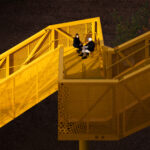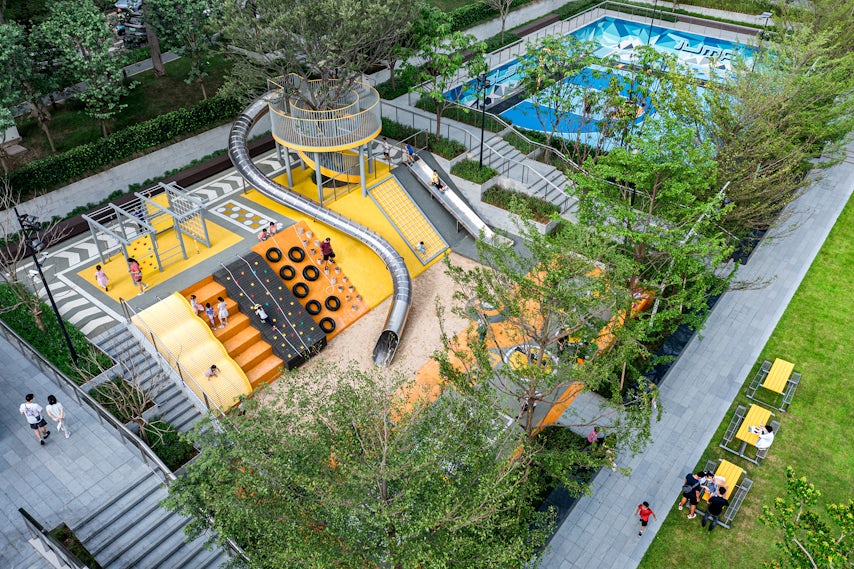Architizer is thrilled to announce the world' best architecture firms in 2024, all winners of the 12th Annual A+Awards! Want to get your firm in the running next season? Stay up to date by subscribing to our A+Awards Newsletter.
Netherlands-based design firm Mecanoo has become known for the team’s astute eye and restraint in architectural renderings. As part of their Render vs Reality series, the team showcases how closely renderings can reflect the built reality of their work. Understanding renderings as essential tools that are both promises to clients and the general public, as well as representations of a shared vision, Mecanoo is rethinking what architectural visualization means today.
Advocating a design methodology rooted in people and place, Mecanoo is a firm that challenges designers to enhance and enrich the human condition. Since its official inception in 1984, the practice has transformed from a group of students to a global firm. They’ve built an iconic body of work, with projects like the library at Delft University of Technology, the Library of Birmingham, and the Longgang Cultural Centre in Shenzhen, China. For them, rendering is a tool that can serve multiple purposes, from communicating intent and storytelling to the everyday exploration of design options.
Putting the power of illustrations to the test, the Render vs Reality projects juxtaposes renderings against photographs of the design matching the same angle and viewpoint. With this social media project, Mecanoo emphasizes the studio’s ability to deliver on its proposals. The following showcases a few of these rendering comparisons, as well as the descriptions of the projects Mecanoo is bringing to life.
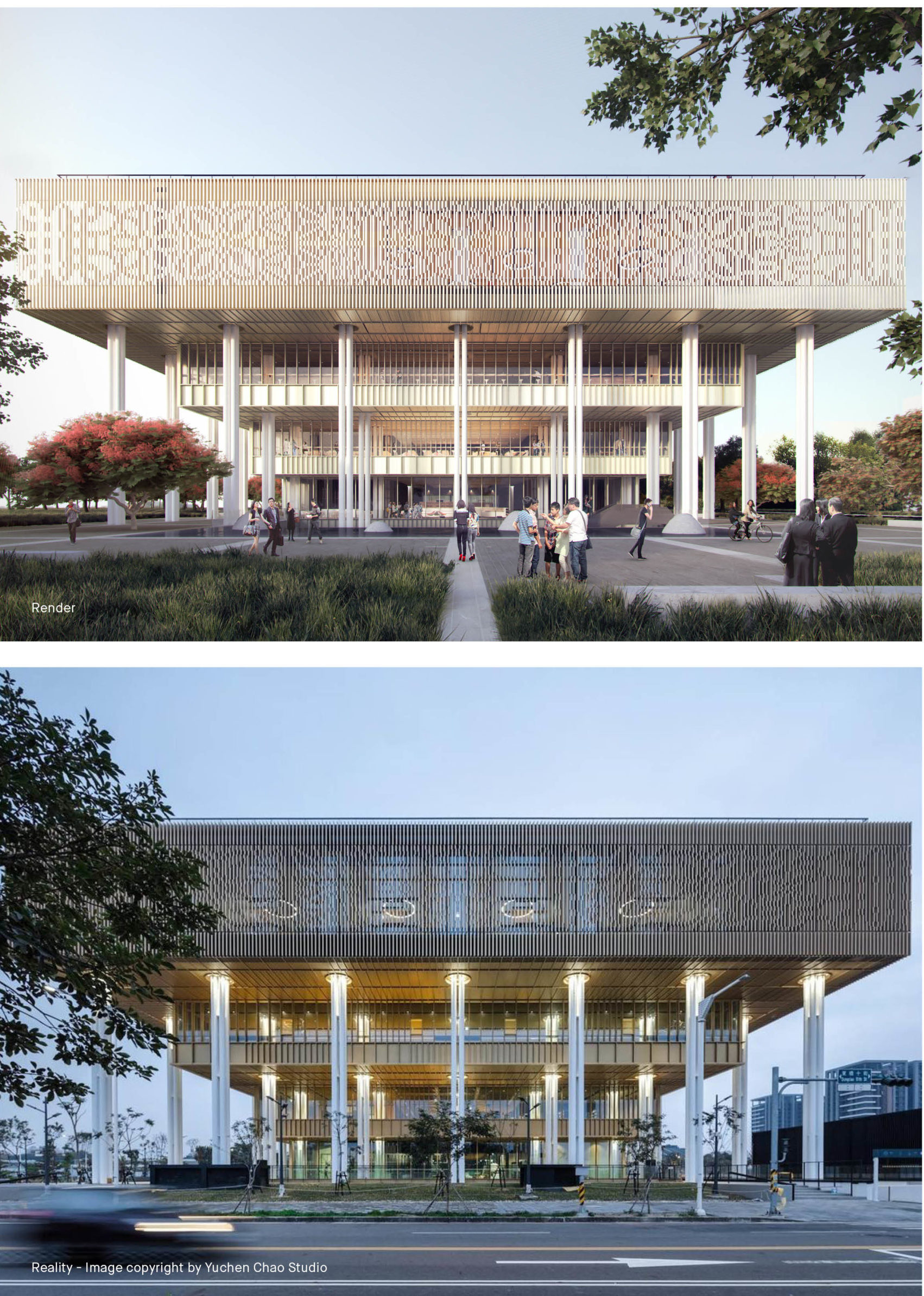
Photo by Yu-Chen Chao
Tainan Public Library
Mecanoo and MAYU’s design for the Tainan Public Library represents the meeting of cultures, generations and histories. Inspired by the local culture and designed for the tropical climate of Tainan. It is home to the city’s cultural heritage, modern art, music, films and over a million books, including more than 16,000 from the Japanese occupation period and of course, is equipped with the latest technologies of a modern library. The most striking feature is the inverted stepped shape of the library. Slender columns support the cantilevers in rhythmically placed quartets, giving a feeling of weaving your way through a modern bamboo forest.
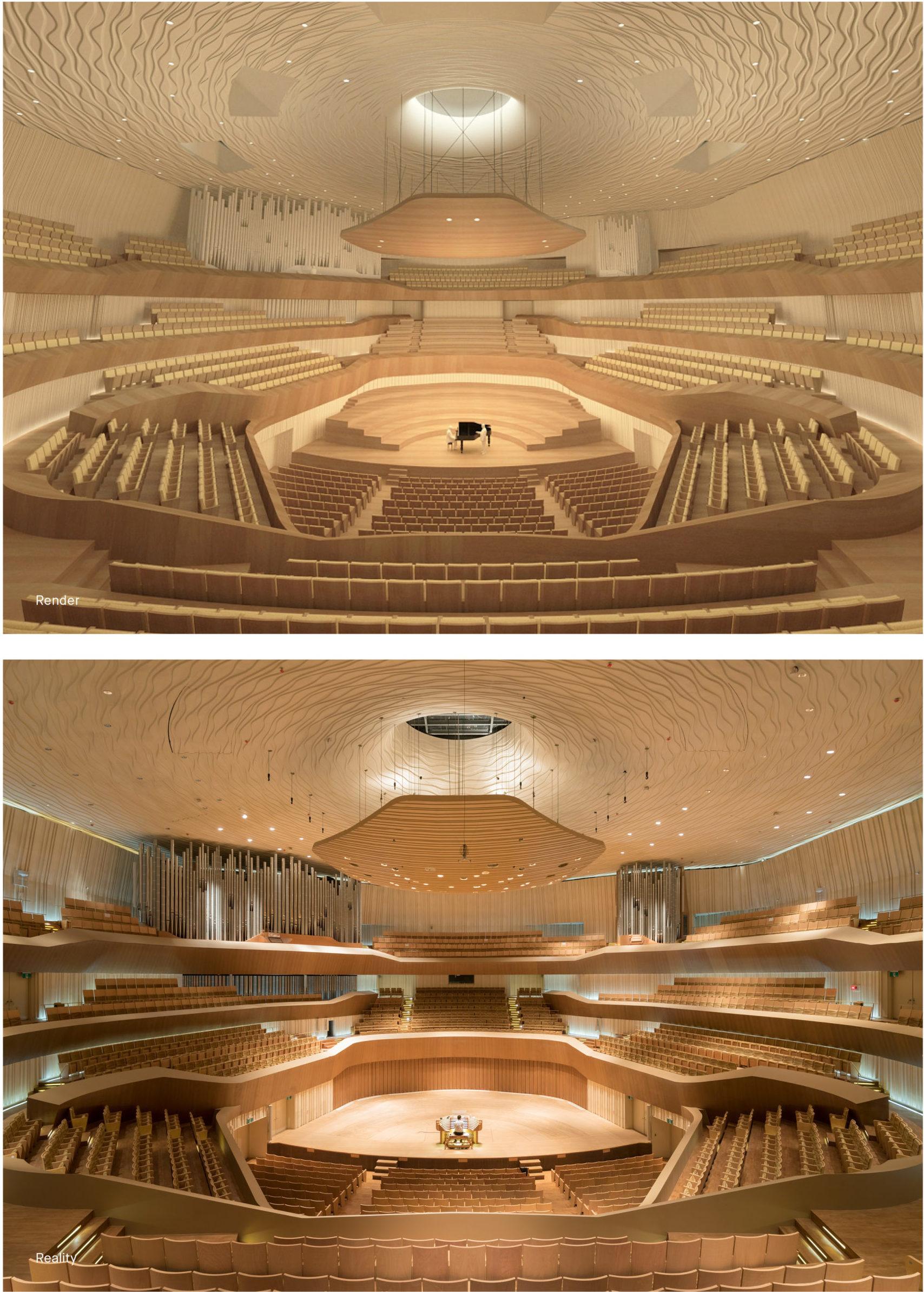
Photo by Christian Richters
The National Kaohsiung Centre for the Arts
The National Kaohsiung Centre for the Arts symbolizes the transformation of Kaohsiung, once a major international harbour, into a modern, diverse city with a rich cultural climate. Mecanoo designed the National Kaohsiung Centre for the Arts, located on a former military terrain, as an integral part of the adjacent subtropical park to have a positive social impact on the residents of Kaohsiung whose population counts almost 3 million. Inspired by the local Banyan trees with their iconic crowns, the vast, undulating structure is composed of a skin and roof, and connects an extensive range of functions.
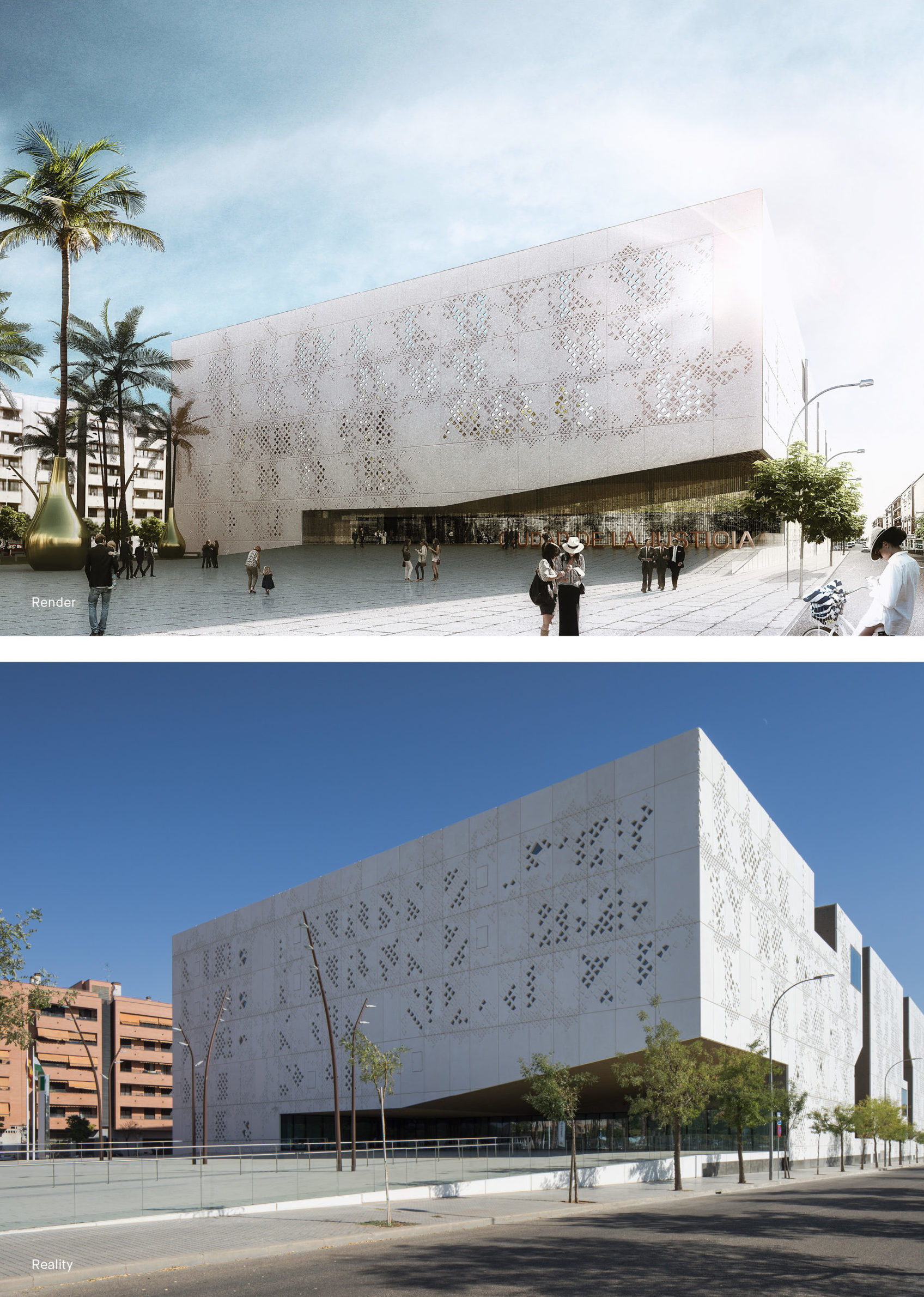
Photo by Fernando Alda
Palace of Justice in Córdoba
The new Palace of Justice in Córdoba is located in Arroyo del Moro which is characteristically dominated by anonymous housing blocks, products of the rapid urban development of 21st-century Spanish cities. The massing strategy creates urban integration through fragmentation. It follows a similar strategy to the spontaneous growth process of medieval cities resulting in a volume which is carefully sculpted to adapt to the surrounding context.
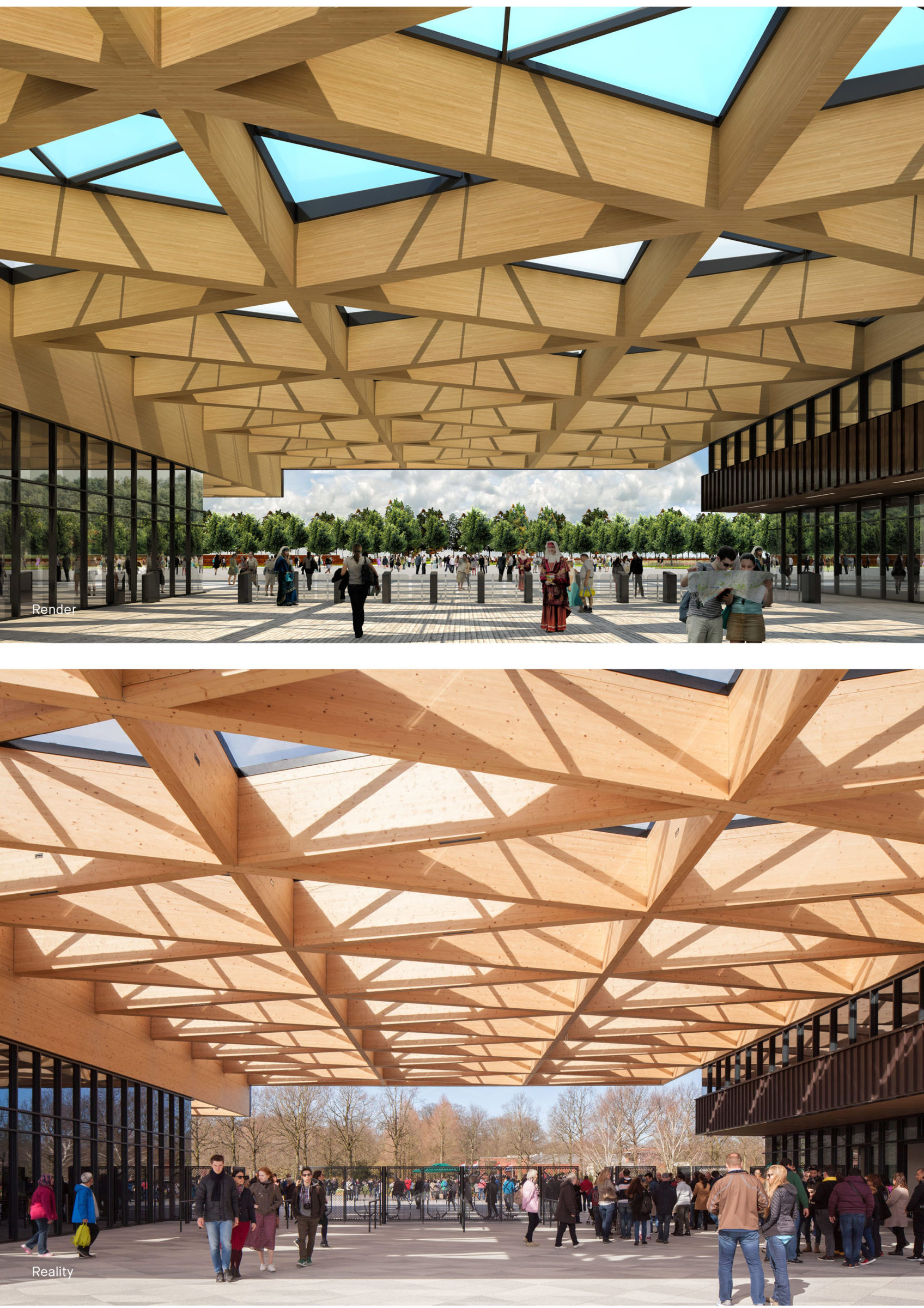 Keukenhof
Keukenhof
A grand gatehouse welcomes the large flows of, mainly international, visitors to the world famous Keukenhof park. The stepped timber roof structure of interwoven isosceles triangles leans on two volumes, forming an impressive gateway to the park. The gatehouse houses public functions such as cash registers, an information desk and retail. Skylights in the roof create a spacious and light atmosphere in the restaurant.
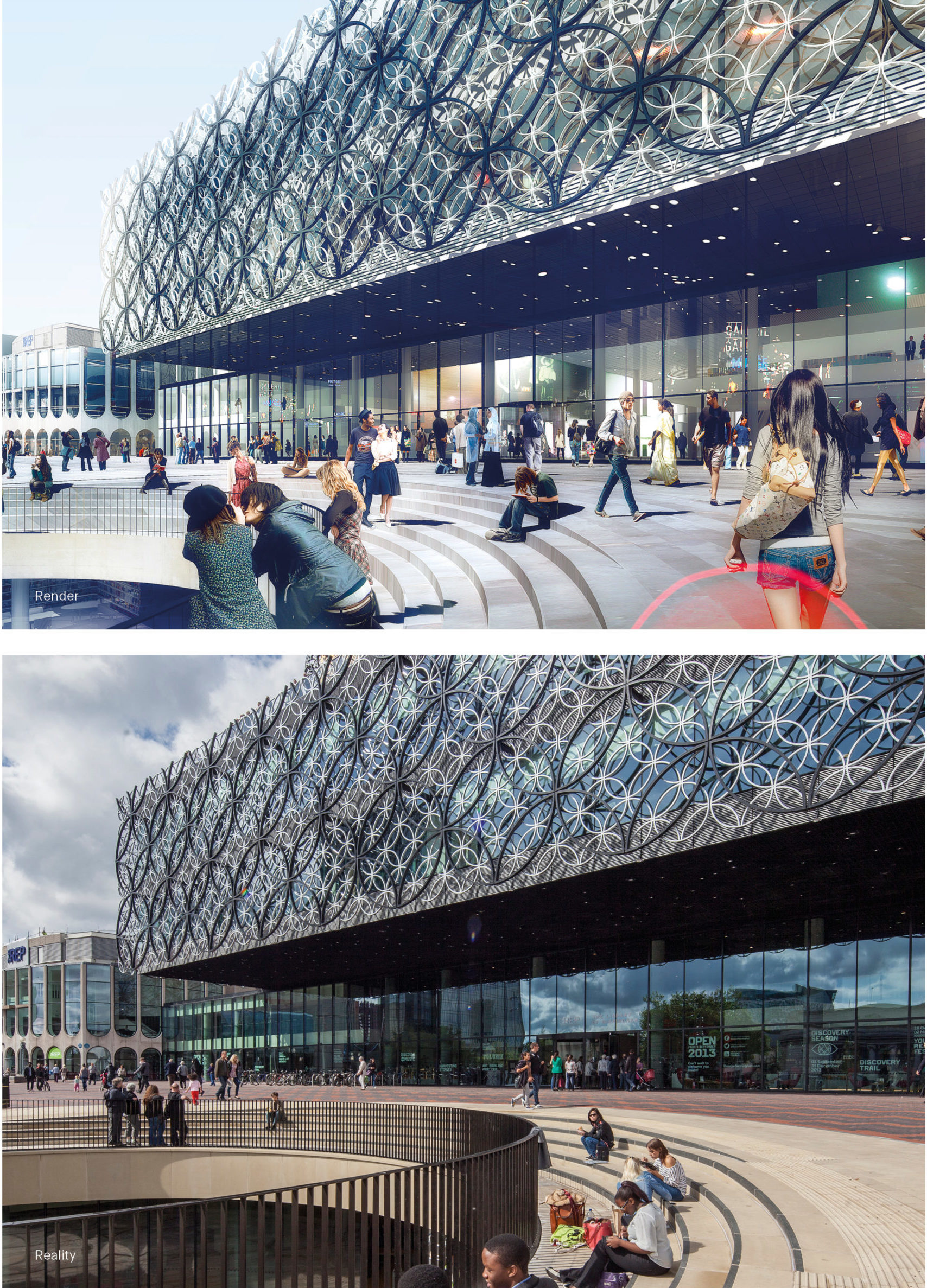
Photo by Harry Cock
Library of Birmingham
More than just a building, the Library of Birmingham (LoB) designed by Mecanoo is a People’s Palace, a centre for learning, information and culture that unites people of all ages and backgrounds. The design extends the space of the street indoors. A cantilevered volume not only provides shelter at the entrance, but also serves as a grand balcony with a discovery garden. The circular courtyard cut out of the square is a protected outdoor space that invites daylight deep into the building.
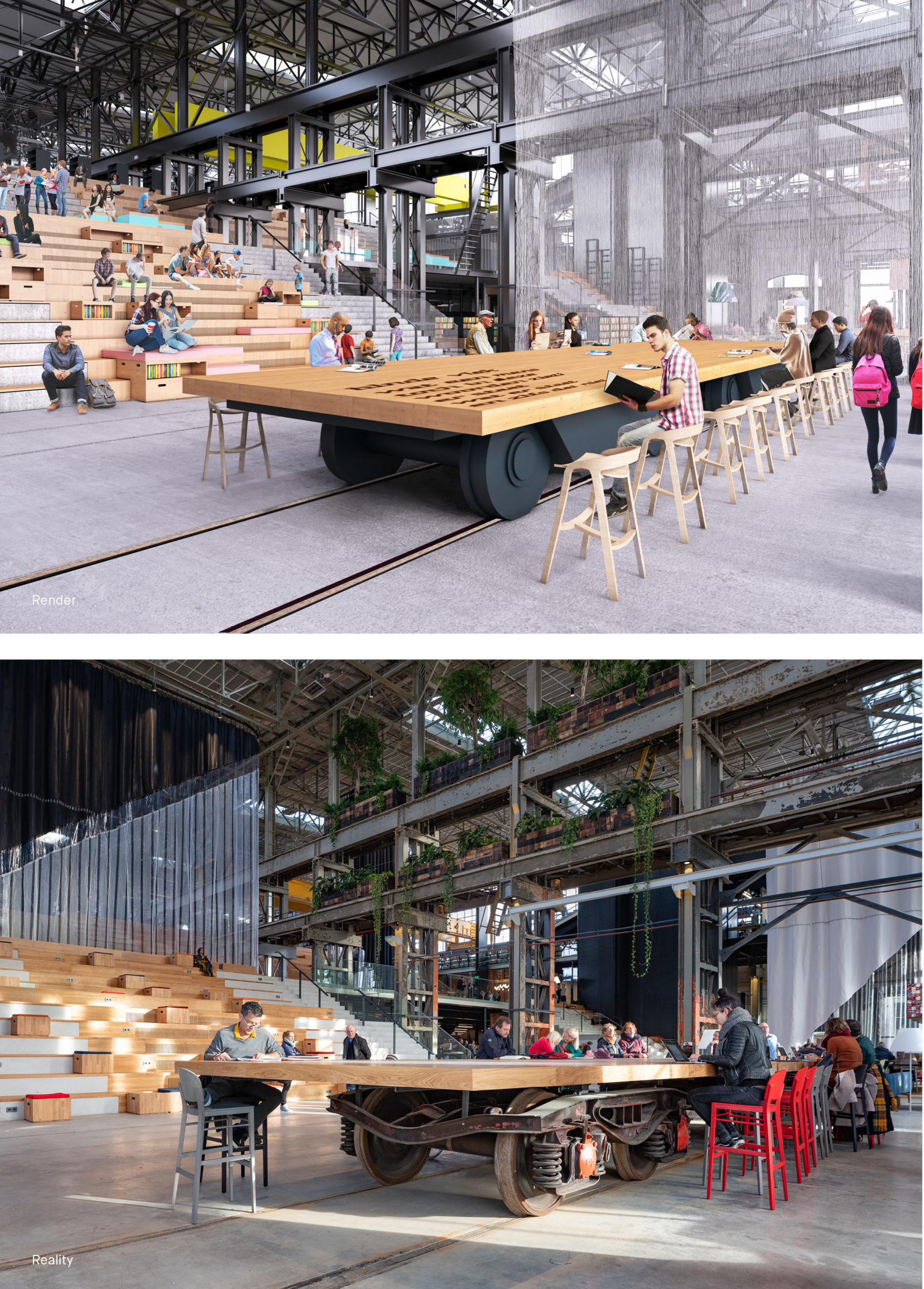
Photo by Ossip Architectuurfotografie
LocHal Library
The LocHal is a new, world-class urban living room for Tilburg in an iconic former locomotive shed of the Dutch National Railways. It is located next to the station, in the heart of Tilburg’s new City Campus. Mecanoo’s playful and innovative interior design forms striking contrasts by combining characteristic historical elements with new oak and steel additions. A color palette of reds and oranges contributes to a warm atmosphere.
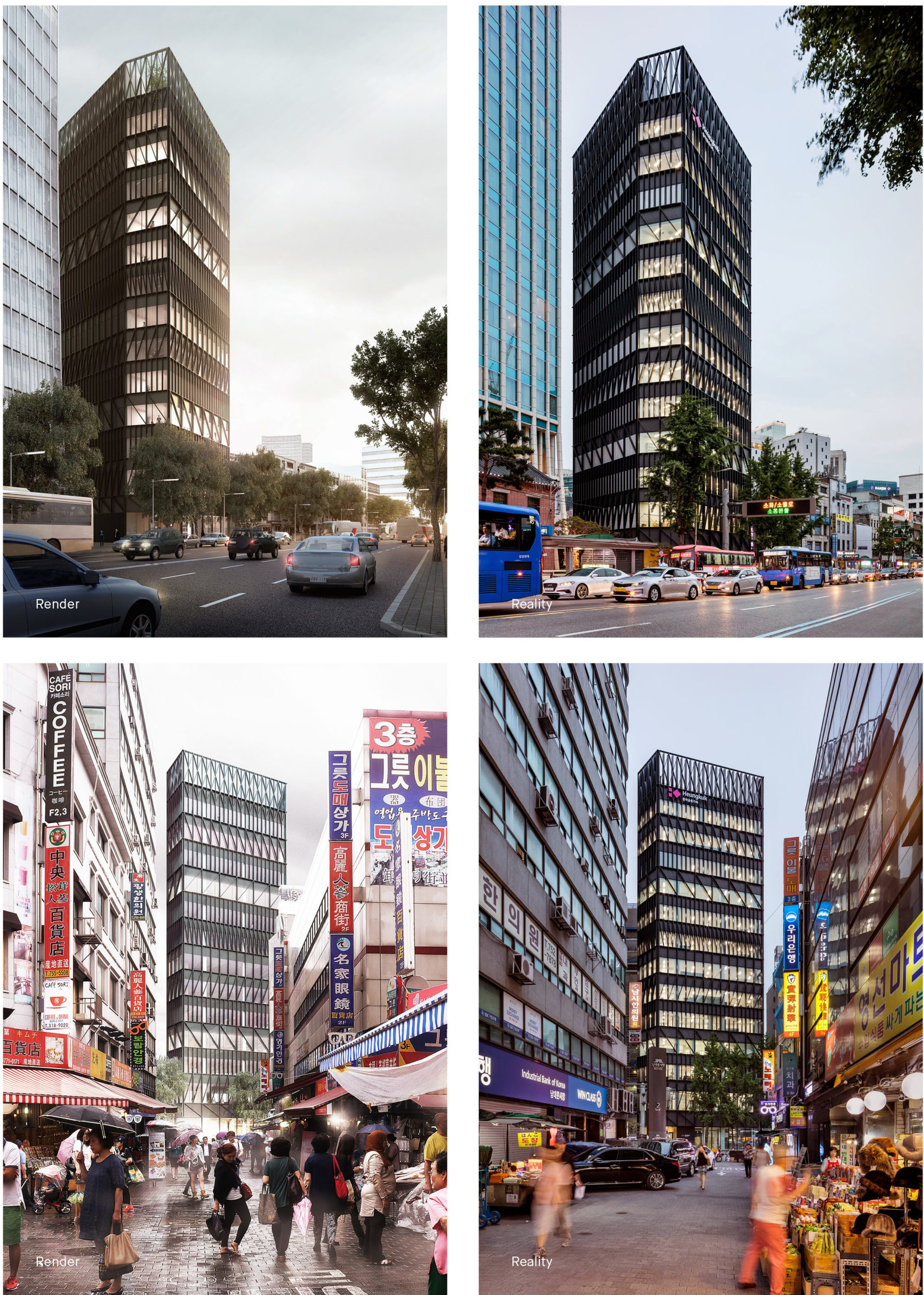
Photos by Kyungsub Shin
Heungkuk Tower Namdaemun
Located next to the ancient southern gate to the city of Seoul, the Namdeamun Market is the oldest and largest market in South Korea. Since its beginnings as a government managed marketplace in 1414, it has become an important 24-hour destination for trade and a popular tourist attraction. The market’s history and regional traditions informed the design for a contemporary office building, connecting past and present. Maximizing the land allocation, the slim 14-floor building sits elegantly on a corner plot opposite the market.
Architizer is thrilled to announce the world' best architecture firms in 2024, all winners of the 12th Annual A+Awards! Want to get your firm in the running next season? Stay up to date by subscribing to our A+Awards Newsletter.





